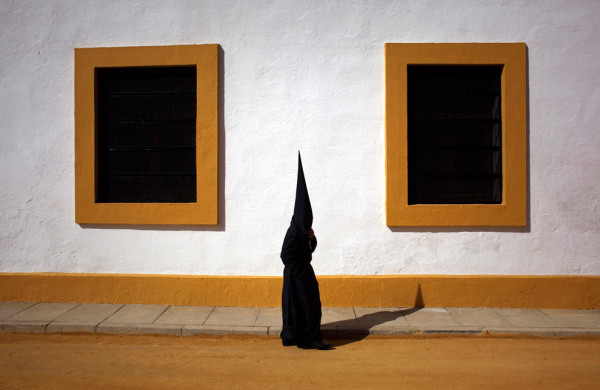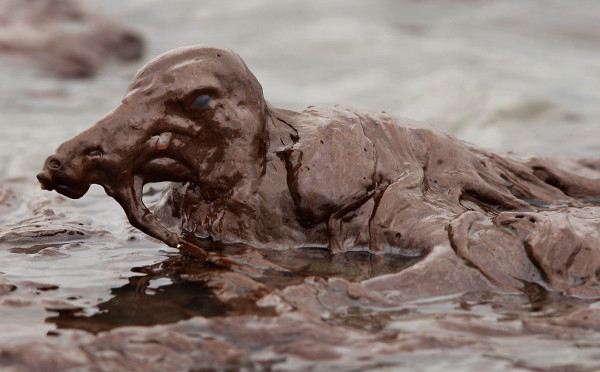We now live in a country in which the bottom 40 percent (120 million people) owns just 0.3 percent of the wealth. Data of this kind make one feel that one is participating in a vast psychological experiment: Just how much inequality can free people endure? Have you seen Ralph Lauren’s car collection? Yes, it is beautiful. It also cost hundreds of millions of dollars. “So what?” many people will say. “It’s his money. He earned it. He should be able to do whatever he wants with it.” In conservative circles, expressing any doubt on this point has long been synonymous with Marxism.
And yet over one million American children are now homeless. People on Medicare are being denied life-saving organ transplants that were routinely covered before the recession. Over one quarter of our nation’s bridges are structurally deficient. When might be a convenient time to ask the richest Americans to help solve problems of this kind? How about now?
Blog
Nosing around in nonsense
Am I the only one who generally finds the internet a lonely vacuum, a vortex, a votive candle in the men’s room of the noisiest shopping mall on the planet? Am I the only one who feels like I’m wasting way too much time nosing around in nonsense, having what’s left of my brains beaten in by jackhammers, and trying to “make friends” when I should be doing a better job of actually being friends? I don’t think so.
Brad Zellar, Utne Reader (via)
Why read?
I think the act of reading imbues the reader with a sensitivity toward the outside world that people who don’t read can sometimes lack. I know it seems like a contradiction in terms; after all reading is such a solitary, internalizing act that it appears to represent a disengagement from day-to-day life. But reading, and particularly the reading of fiction, encourages us to view the world in new and challenging ways… It allows us to inhabit the consciousness of another which is a precursor to empathy, and empathy is, for me, one of the marks of a decent human being.
John Connolly
Fitzgerald: What people are ashamed of
What people are ashamed of usually makes a good story.
— F. Scott Fitzgerald
Classic icon prints
Bloodlands: Europe Between Hitler and Stalin
Matthew Price reviews Bloodlands: Europe Between Hitler and Stalin by Timothy Snyder, whose “subject is ‘political mass murder’ and the 14 million mostly civilian victims — women, children, the elderly — who were variously shot, starved, and gassed by the Germans and the Soviets between 1932 and 1945.”
At the height of Stalin’s Great Terror, a team of only 12 Soviet secret police kills 20,761 people outside of Moscow in 1937 and 1938, burying them in pits. “On any given day in the second half of 1941, the Germans shot more Jews than had been killed by pogroms in the entire history of the Russian Empire,” Snyder tells us. And few readers are likely to be acquainted with the plight of Belarusians between 1941 and 1944. As the Germans rampaged through Belarus, they waged a war, in effect, against civilians. The death toll was staggering. Of 350,000 people killed in the anti-partisan campaign, some 90 per cent were unarmed. The Germans also killed half a million Belarusian Jews. “By the end of the of the war,” Snyder notes, “half the population of Belarus had either been killed or moved. This cannot be said of any other European country.”
…
Now and again, a voice of one of the perpetrators breaks through, to horrific effect. “During the first try, my hand trembled a bit as I shot, but one gets used to it,” a German policeman writes to his wife about his first experience shooting Jews. “Infants flew in great arcs through the air, and we shot them to pieces in flight, before their bodies fell into the pit and into the water.”
Photo of the Day
“A penitent from ‘La Sed’ brotherhood walks to the church to take part in a procession in Seville, Southern Spain, Wednesday, March 31, 2010. Hundreds of processions take place throughout Spain during the Easter Holy Week. (AP Photo/Emilio Morenatti)” (Via)
Photo of the Day #2
“A bird is mired in oil on the beach at East Grand Terre Island along the Louisiana coast on Thursday, June 3, 2010. Crude oil flowed from a hole in the bottom of the Gulf of Mexico for three months after the Deepwater Horizon oil rig exploded and sank on April 20th, 2010. (AP Photo/Charlie Riedel)” (Via)

